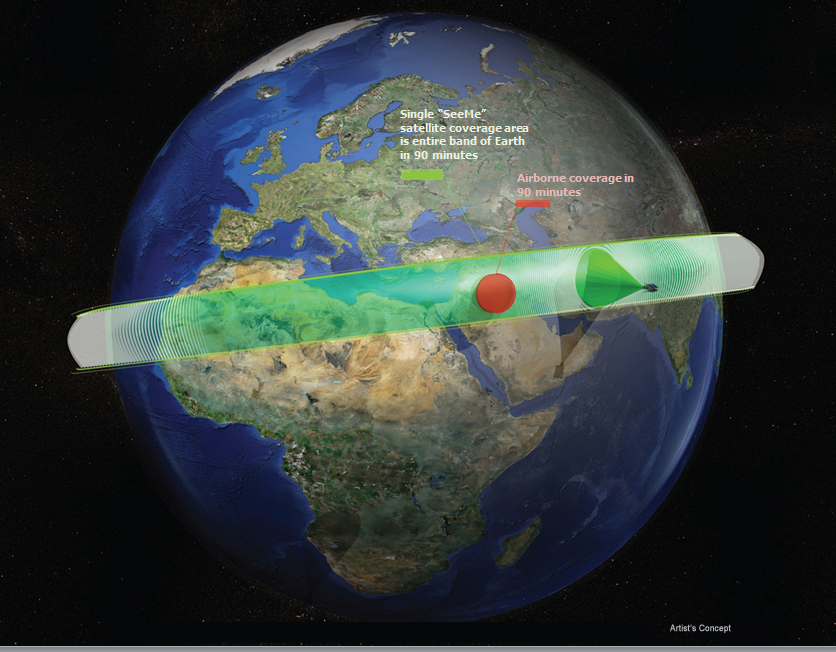On-demand satellite imagery for frontline warfighters
March 14, 2012
DARPA wants to build inexpensive, “disposable” satellites for timely overhead imagery.
It’s seeking expertise from mobile phone, medical pneumatics, industrial machinery, optics, and automobile racing communities
DARPA’s SeeMe program (Space Enabled Effects for Military Engagements) aims to give mobile individual U.S. warfighters access to on-demand, space-based tactical information in remote and beyond-line-of-sight conditions.
If successful, SeeMe will provide small squads and individual teams the ability to receive timely imagery of their specific overseas location directly from a small satellite with the press of a button — something that’s currently not possible from military or commercial satellites.
Handheld access to a satellite image
“We envision a constellation of small satellites, at a fraction of the cost of airborne systems, that would allow deployed warfighters overseas to hit ‘see me’ on existing handheld devices and in less than 90 minutes receive a satellite image of their precise location to aid in mission planning,” said Dave Barnhart, DARPA program manager.
“To create inexpensive, easily manufacturable small satellites costing $500K apiece will require leveraging existing non-traditional aerospace off-the-shelf technologies for rapid manufacturing, such as the mobile phone industry’s original design manufacturers, as well as developing advanced technologies for optics, power, propulsion and communications to keep size and weight down.”
DARPA hosts a Proposers’ Day on Mar. 27. The following technology areas and non-traditional space communities are sought for the SeeMe program:
- Rapid, low-cost manufacturing technologies (mobile phone industry original design manufacturers)
- Propulsion technology (automobile racing industry nitrous oxide high-pressure cold gas technology)
- Solid state components (industrial machinery electronics components)
- Valve technology (medical pneumatic valve industry)
- Advanced optics (developers of non-traditional RF membranes and visual apertures)
The SeeMe constellation may consist of some two-dozen satellites, each lasting 60–90 days in a very low-earth orbit before de-orbiting and completely burning up, leaving no space debris and causing no re-entry hazard.
The program may leverage DARPA’s Airborne Launch Assist Space Access (ALASA) program, which is developing an aircraft-based satellite launch platform for payloads on the order of 100 lbs. ALASA seeks to provide low-cost, rapid launch of small satellites into any required orbit, a capability not possible today from fixed ground launch sites.
“SeeMe is a logical adjunct to UAV technology, which will continue to provide local or regional very high-resolution coverage, but which can’t cover extended areas without frequent refueling,” Barnhart said. “With a SeeMe constellation, we hope to directly support warfighters in multiple deployed overseas locations simultaneously with no logistics or maintenance costs beyond the warfighters’ handhelds.”
Interested proposers may view the Proposers’ Day special notice here.
